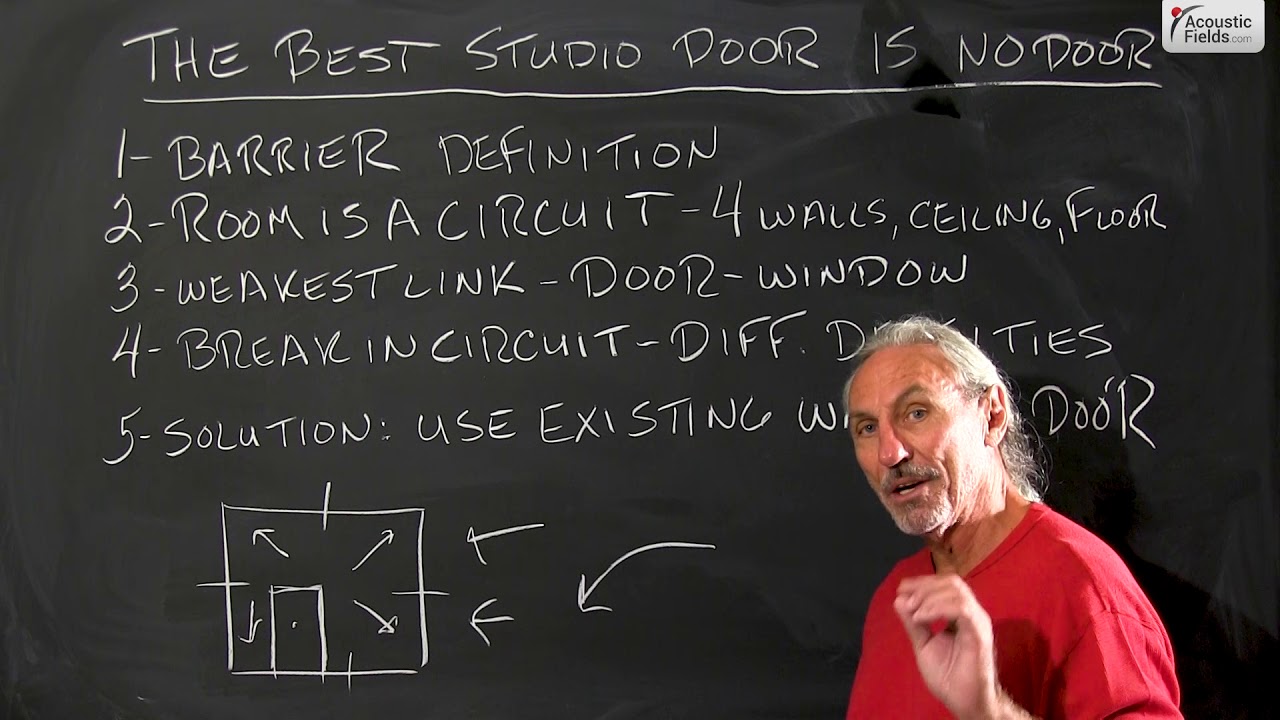I get a lot of calls, a lot of e-mails about studio doors. What door do I build? What’s the right kind? How thick do I make it? All questions that can be answered if we have the appropriate data. But the best studio door ever is no door at all, okay? What’s the best sound-absorbing part of your room? An open window. Because once sound leaves it, it never comes back, okay? So that’s a perfect absorber and there aren’t many of those around there.
So we can kind of apply that same thinking to a door in our studio. What I want you to think about is your room as an electrical circuit. We have the 4 walls, we have the ceiling and we have the floor. So we have surfaces that are all connected to each other just like in an electrical circuit. Current or energy is striking those surfaces, okay? Energy is striking that from the outside, too. So everything is working together, everything is connected and everything must work.
Now, when we take and cut a hole in that surface for our door we cause a short in the circuit, okay? So what are we going to do? If the density of the door is not equal to the density of the walls in which the door is found, then we create a short circuit. And sound is like water. It will take the path of least resistance and go to that. So if we build a wall that’s 8 inches thick and we put a door in that wall that’s 2 inches thick the sound is going to go to the weakest link which is the 2 inch section.
So density is really critical. So that’s why I say with using a play on words here, the best studio door in your room is no door at all. You just simply – and we do this on all our designs – once we calculate the density of the wall that we’re going to use, that we’re going to put our door in and we just simply frame out and carry over the same density that’s in the wall.
Now, yes, our doors can be 12 inches thick, our doors can be 16 inches thick. We’re building one right now that’s 24 inches thick. Because that’s the thickness of the wall. We don’t want to create a short circuit. We don’t want to create a weak area in the wall where sound can get into. So view your room as a circuit, no breaks, density is the key to keep the current flowing so to speak. Hope this helps and let’s build more really thick doors.
—
This is an unedited transcript from our video series from Acoustic Fields. There will be some errors in grammar and sentence structure that occur during this translation process.
For complete understanding and comprehension, please view the video which is included in this text. For any additional information regarding this topic or others relating to room acoustics, please contact us directly at:
P: 520 – 392 – 9486







